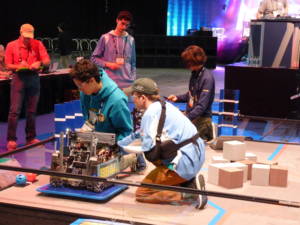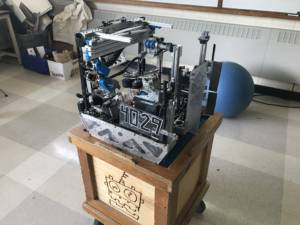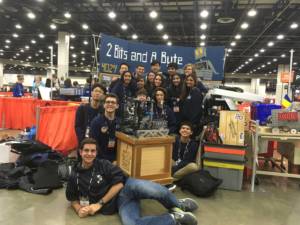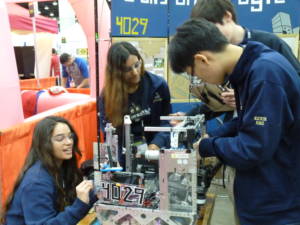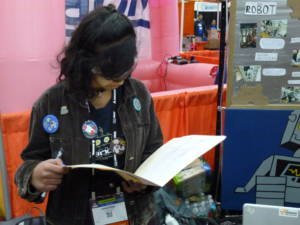Mission Accomplished
Robotics Team Enjoys the Rewards of Perseverance and ‘Coopertition’
When talking to students who love robotics, the stories about how they got hooked vary.
“I had always been into taking things apart, from vacuums to digital cameras,” says 17-year-old Ian Burwell, a high school senior from Lexington, MA. “Then I started attending various camps, namely one called iCamp, which is now Empow Studios. Attending these camps I found a love for just building cool things, like cars for a stop-motion animation or a robotics arm to pick up ‘Mars rocks.’”
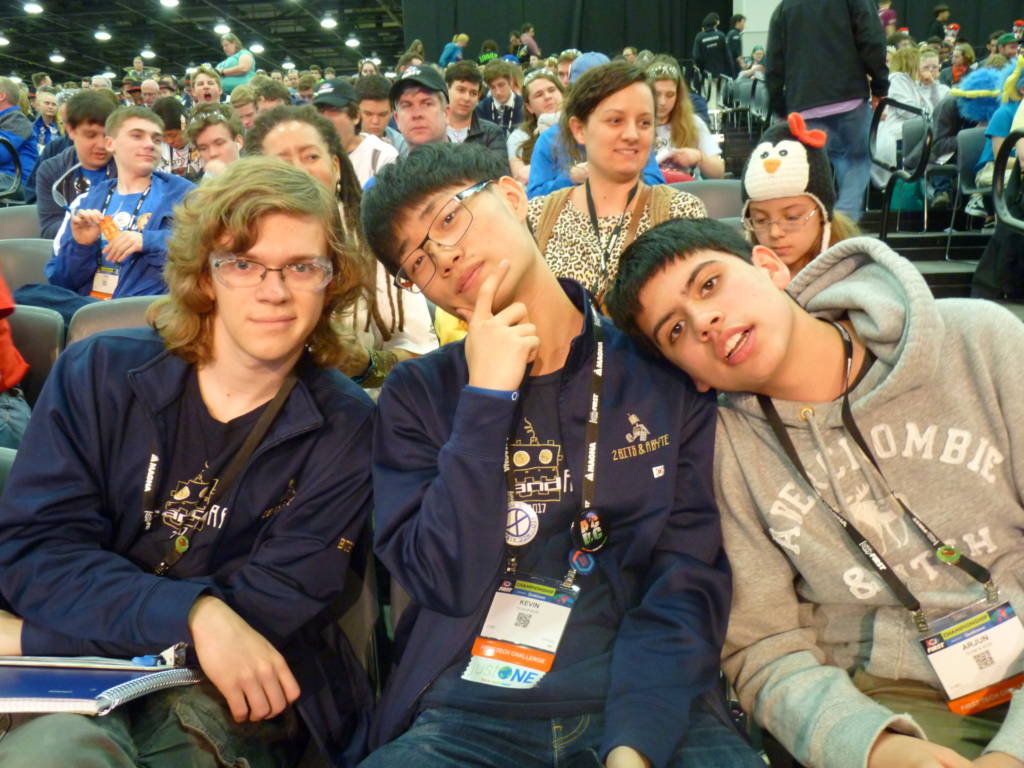
Ian would ultimately join the Empow staff and take part in Lexrobotics, a FIRST Tech Challenge (FTC) program based at Lexington High School (LHS). His teammates recall different introductions to robotics.
“My mom actually dragged me to robotics class when I was in 3rd grade, because she thought I was doing nothing but soccer,” laughs 17-year-old Kevin Rho. “There, I was introduced to one assignment, and I was doing the worst in the class. I didn’t want to be the worst, so I kept working and pushing hard. Eventually, I got to see the latent beauty of robotics, and it became my favorite thing to do!”
“I got interested in robotics when one of my friends brought me to a meeting my freshman year, which I did not expect to enjoy at all,” says 17-year-old senior Aradhna Johnson. “I actually ended up finding that there is something so interesting about the precision and thought that it takes to make each part of a robot work together smoothly.”
“I had heard about the robotics team at LHS and decided to try the rookie team in October of my freshman year,” recalls 16-year-old junior Kriti Moogala. “Watching the more experienced members working together to put together a beautiful robot inspired me to come back the next year.”
Today all four students have found their niche within the larger Lexrobotics program, which incorporates two FTC teams: a coed team called 2 Bits and a Byte (Team #4029), and an all girls team called Parity Bits (Team #8379).
“Everyone brings their unique experiences and perspective to the robotics community, making it an amazing place to be,” adds Kriti.
“I love the community,” says Ian. “At competitions along with online, everyone is respectful and willing to help. Both teams have great adult mentors both who know the meaning of “student run” very well. Students on the team coordinate almost everything, from fudge fundraisers to the robot’s design.”
Readying the Robots
FTC robotics teams are involved with the FIRST (For Inspiration and Recognition of Science and Technology) organization, which also runs FIRST LEGO League (FLL) and FIRST Robotics Competition (FRC). FTC and FRC robots differ in size, costs and build times.
“FTC robots differ from FRC mainly because they are much smaller,” says Aradhna. “FRC robots are oftentimes human sized. They also have a different game with a bigger field. The other difference is that the FRC build season takes about six weeks, rather than a continuous eight month process.”
The 2018-19 FIRST season has announced a space theme, with “Into Orbit” for FLL teams, “Destination: Deep Space” for FRC teams and the FTC mission has been dubbed “Rover Ruckus.”
“Our build season starts in early September when the challenge comes out, and the first qualifiers start in mid October,” notes Kriti. “At the early qualifiers most teams don’t have a complete robot, however the main components of the robot are generally functioning.”
The teams create a steady amount of work and set goals throughout the build season. As with other robotics teams, there are typically problems that arise and a lot of hours put in during the final weeks and days before a competition.
“When people ask us how long it takes us to build our robot, we are oftentimes at a loss for an answer because we are never truly done improving our design,” says Aradhna. “The timeline for a build is usually that we have a functioning robot by November, about two months into the season, but keep brainstorming potential better designs. By December, we try to have a second robot ready with our final design idea, and then keep making smaller changes from there.”
As the teams look ahead to this season, they are still enjoying the accomplishments of the 2017-18 ‘Relic Recovery’ season, which culminated with ‘2 Bits and a Byte’ being part of a trio that won the FTC Detroit World Competition. The win capped off a season filled with ups and downs, which was boosted by a sense of cooperation between teams. Kevin recalls a pivotal time during the Massachusetts State Competition. “There, we had a bunch of disconnection errors, and we couldn’t finish above 4th overall,” recounts Kevin. “However, team 8644, The Brainstormers, another Lexington team, picked us as their 2nd pick alliance. From there, our team was able to win the Semi-finals, and eventually the Finals, where we advanced to the Super-Regionals through ‘Winning Alliance 2nd Pick’.”
What’s unique about both FTC and FRC competitions is that they involve multiple teams (4-6) that are part of alliances that compete together against another alliance. In the case of FTC, there are four teams on the field at once with dual alliances competing against each other. All FIRST competitions emphasize the concepts of Gracious Professionalism and Coopertition. In the end, the competitions are about more than just the technical ability of each robot; there is strategy between teams and other factors, such as mentoring and community outreach, that can determine which teams attend Worlds.
“We thought we failed to qualify for the World Championship,” adds Kevin. “Almost by surprise, we won the second place Motivate Award, which granted us a spot at the World Championship.”
The Journey to ‘Worlds’
In April of 2018, 30,000 students from around the United States and the world converged in both Detroit and Houston for the annual FRC and FTC World Championships. Among the 700 teams from 37 countries at the Detroit competition was 2 Bits and a Byte which traveled with another Massachusetts team – the Canton Robodogs (team #6040).
To the right you will see the documentary created by 2 Bits and a Byte team member, Vichka Fonarev, about the team’s trip to the FIRST Detroit World Championship in April 2018.
“We had a great time with them,” says Kevin. “The venues were great. The atmosphere created by the crowd was astonishing. It was fascinating to see many teams from all around the world.”
Kevin, who blogged about the entire season including the Worlds trip, said it was a rollercoaster of emotions. In the beginning of the competition, the team was winning matches and was ranking well. The team would then suffer some setbacks due to technical issues. However, a past alliance came through.
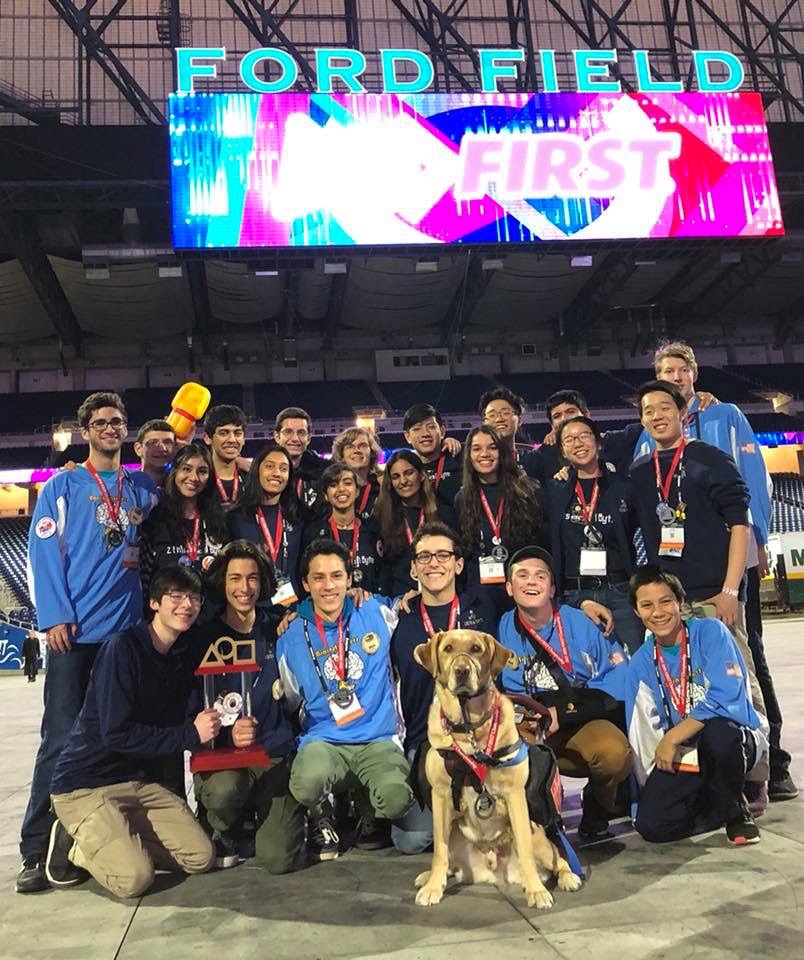
“During the alliance selection, team 8644, The Brainstormers, once again, graciously picked us for their 2nd pick,” he says. “We ended up going through to the division finals in the World Championship for the first time in 2 Bits and a Byte history, and eventually became the World Champions for the first time also.”
The team was part of a three-way alliance led by the Brainstormers, who paired up with the Giant Diencephalic BrainSTEM Robotics Team (#8393) of Pittsburgh, PA for the 1st match and 2 Bits and a Byte for the 2nd match of the Finals, winning both for the championship. It was an emotional moment for 2 Bits and a Byte, which had come to ‘Worlds’ five times previously without advancing past the semi-finals.
“Everyone was really happy and we couldn’t believe it!” recounts Kevin. “I was crying, because the division finals match was making me think back to all the hardships and stress that everyone had for a year, and thought that it was very much worth it. In Ford Field, we were standing before the crowd of nearly 30,000 people in the stands, and even more from the internet. There, we came out as the champions.”
“My experience going to Detroit was probably one of the highlights of my junior year,” says Aradhna. “One of my favorite memories would have to be on our last day after competition was over when we stayed up super late playing video games. It’s cool to build a competitive robot, but I think it’s cooler how through that whole process, you make this big group of friends that you’ve shared so many unique experiences with.”
“Going to Detroit, as Aradhna said, was one of the best parts of my year,” added Kriti. “The World Championship was truly inspiring because it allowed me to see how big the FIRST community was. Being in Detroit was the climax of our season, and we all got to see our hard work throughout the season pay off.”
2 Bits and a Byte team up with the Brainstormers (right side) to score 598 points at the Massachusetts Andover qualifier during the 2017-18 ‘Relic Recovery’ season. Opposite of the two teams (left) are members of Lexington’s middle school team Robot Revolution who started their FTC season after completing their FLL season.
Building Confidence and Careers
“Our mentors are Mr. Harris and Ms. Tracy; they are the best mentors anyone can ask for,” notes Kevin, who applauds the dedication of mentors Jeffrey Harris and Michaela Tracy. “They believe in us, they give up their precious time for us, and they try to let students have the most freedom they can have,” he adds.
The FIRST organization recognizes mentors at all competitions. The goal of all of the FIRST mentor-based programs is to build science, engineering and technology skills while boosting self-confidence, communication, and leadership. The overall mission is to inspire young people to be science and technology leaders and innovators.
“I am interested in botany and in English, but I never thought that STEM and writing really overlapped,” says Aradhna. “I was always wondering things like, ‘how does being able to write a poem help build a robot?’ As it turns out, the engineering notebook is a large part of the work we need to do because it outlines the process of how you build your robot. So, although I’m not writing poems, my interest in writing has helped me to express my ideas about the build process clearly. So, this team has helped me see where my interests in writing and science overlap, and how that may translate to writing scientific papers and such. Being a part of ‘2 Bits’ has been a fulfilling experience for me. I honestly never could have imagined myself doing it at the beginning of freshman year, but now I can’t imagine high school without it.”
For Kevin, the team has helped refine his career goals. “I decided on my career when I was in 4th grade: an engineer,” he recalls. “I have loved robotics since then. But I didn’t know what kind of engineer I wanted to be: mechanical, electrical, computer science, etc. When I came to the United States, and joined an FTC team, I got to finally know what I wanted to do when I was older: mechanical/electrical engineering. I chose this path by trying new things and gaining experiences by participating in FTC competitions and learning about robotics in a room filled with such a wonderful group of people.”
As the season ramps up, Kevin is among those who promotes robotics. “People think robotics is very hard,” he says. “I think this is the main reason why people don’t want to try robotics even though they are interested in it. But it’s not that hard. Maybe it is, but if you put effort into it, you will earn more than you would ever lose. For example, I started robotics, and as said before, I was the worst at it. But I kept pushing, and I became the Captain of an FTC team that I love.”
